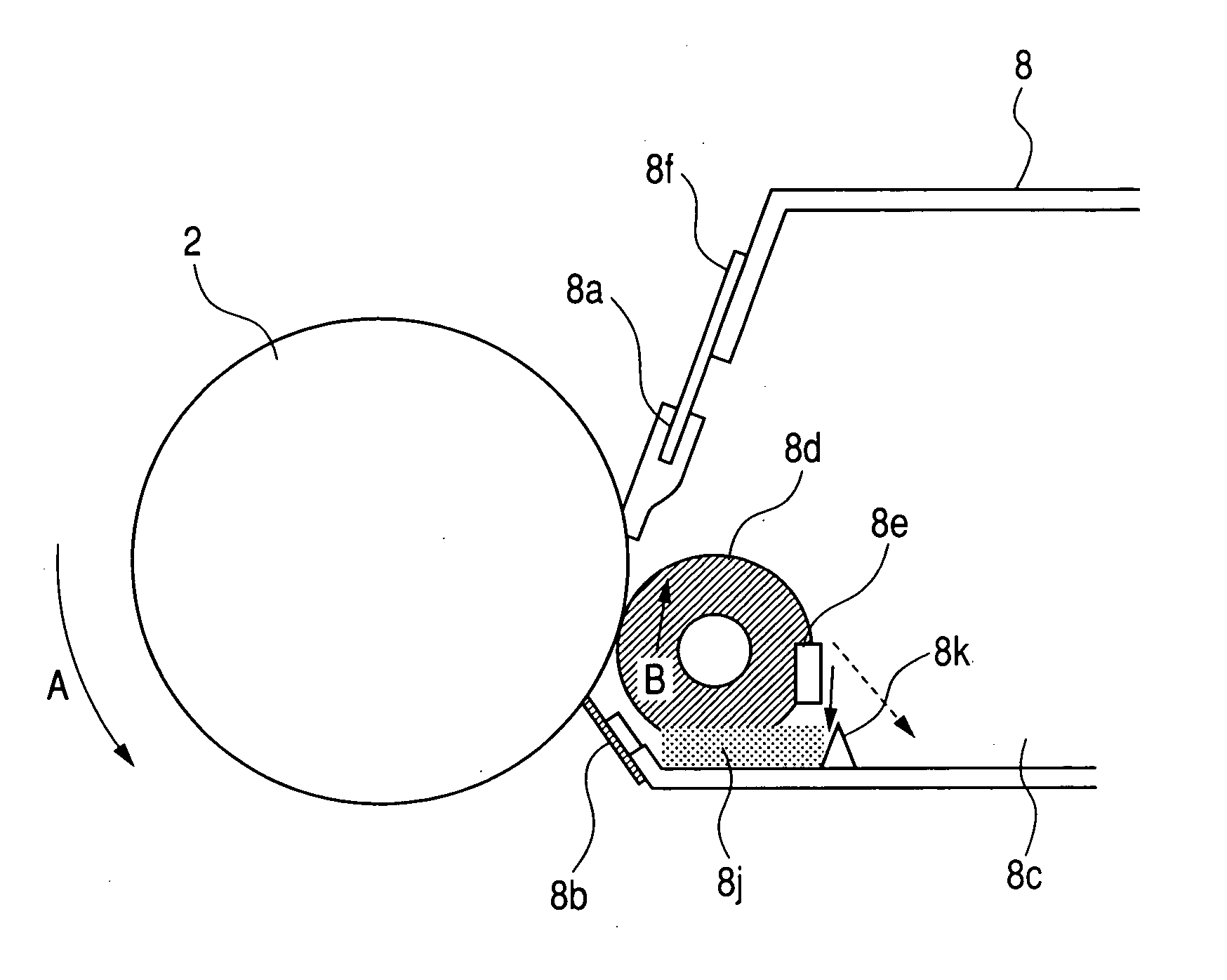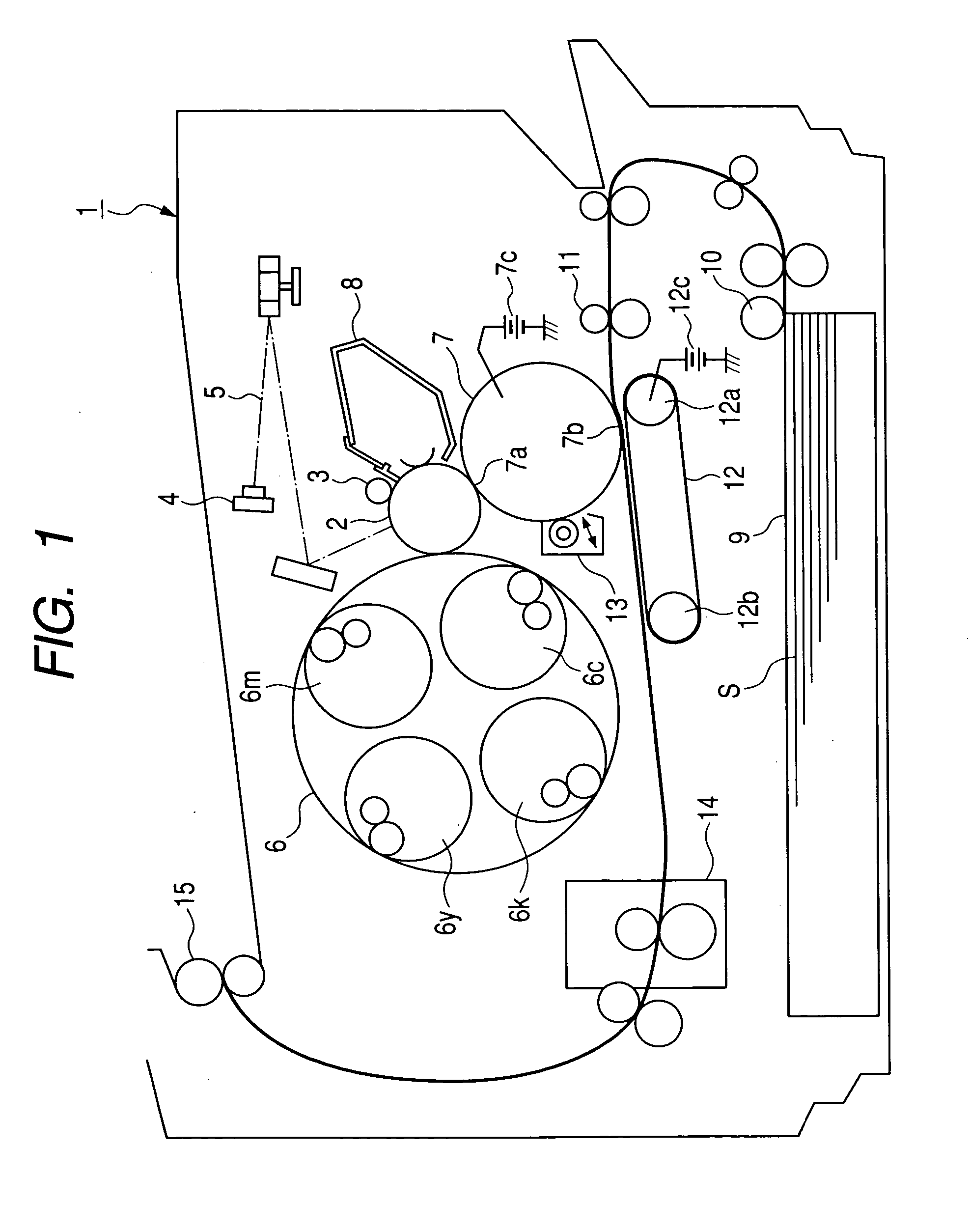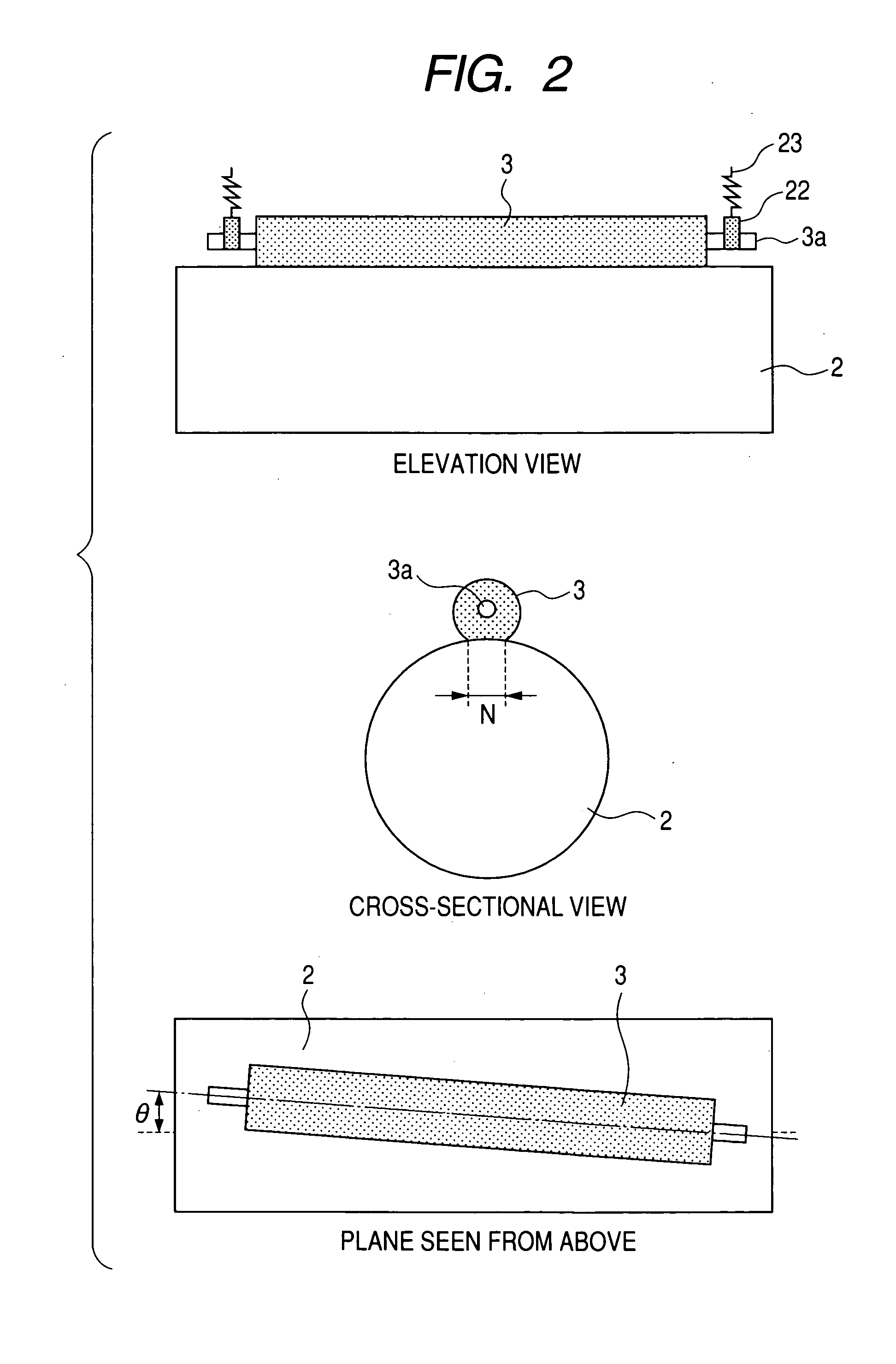Image forming method
a technology of image bearing and forming method, which is applied in the direction of instruments, electrographic process apparatus, corona discharge, etc., can solve the problems of ozone generation, image deletion, and sticking of toner onto the surface of the image bearing member, and achieves low running cost, high image quality, and long service life
- Summary
- Abstract
- Description
- Claims
- Application Information
AI Technical Summary
Benefits of technology
Problems solved by technology
Method used
Image
Examples
example 1
[0118] An image forming apparatus employed in the present example is approximately same as that in the foregoing embodiment. As the abrasive particles, strontium titanate having an average primary particle size of 100 nm, a cubic and / or rectangular parallelepiped shape and a perovskite crystalline structure was employed. In the abrasive particles, a content of particles or aggregates of a size of 600 nm or larger was 1% in number or less. In the abrasive particles of the present example, the cubic and / or rectangular parallelepiped shape and the perovskite crystalline structure allow to effectively eliminate charging products on the surface of the photosensitive member. Also a supply member for the abrasive particles was provided in the cleaning container, as illustrated in FIG. 3. The cleaning apparatus 8 is constituted of a cleaning blade 8a serving as cleaning means supported by a metal plate 8f, a toner collecting sheet 8b, a used toner recovery container 8c, a fur brush 8d const...
example 2
[0153] The present example employed, as the abrasive particle supply method, a method of externally adding the abrasive particles to the developing toner and supplying them under a developing operation. The cleaning apparatus 8 had a structure in Example 1, from which the rotary fur brush 8d constituting the abrasive particle supplying member and the abrasive particles 8j were removed. Other structures are same as those in Example 1.
[0154] Table 4 shows a relationship between a ratio of the abrasive particles externally added to the toner, and a mixing ratio of the abrasive particles present in the transfer residual (used) toner.
TABLE 4(Mixing ratio of abrasive particles in transfer residual toner)External addition rate0.10.50.71.01.52.0(weight %) of abrasiveparticles in developing tonerMixing ratio (weight %) of0.21.01.52.03.04.5transfer residual toner andabrasive particles = abrasiveparticle supply amount A
[0155] In the above-described configuration, an image smearing in an env...
example 3
[0157] The present example employed, as the abrasive particle supply method, both a method of externally adding the abrasive particles to the developing toner and supplying them under a developing operation and a method of providing an abrasive particle supplying member in the developing container. The cleaning apparatus 8 had the same structure as in Example 1. An image smearing in an environment of a temperature of 30° C. and a humidity of 80%, and a charging unevenness and a cleaning property in an environment of a temperature of 23° C. and a humidity of 5% were evaluated in a durability test of 10,000 prints by varying the abrasive particle supply amount A (weight %), the contact pressure B (g / cm) of the cleaning blade and the crossing angle θ.
[0158] As a result, a satisfactory cleaning property could be obtained without an image smearing under a high humidity condition or an image unevenness resulting from contamination on the contact charging roller under a low humidity condi...
PUM
 Login to View More
Login to View More Abstract
Description
Claims
Application Information
 Login to View More
Login to View More - R&D
- Intellectual Property
- Life Sciences
- Materials
- Tech Scout
- Unparalleled Data Quality
- Higher Quality Content
- 60% Fewer Hallucinations
Browse by: Latest US Patents, China's latest patents, Technical Efficacy Thesaurus, Application Domain, Technology Topic, Popular Technical Reports.
© 2025 PatSnap. All rights reserved.Legal|Privacy policy|Modern Slavery Act Transparency Statement|Sitemap|About US| Contact US: help@patsnap.com



